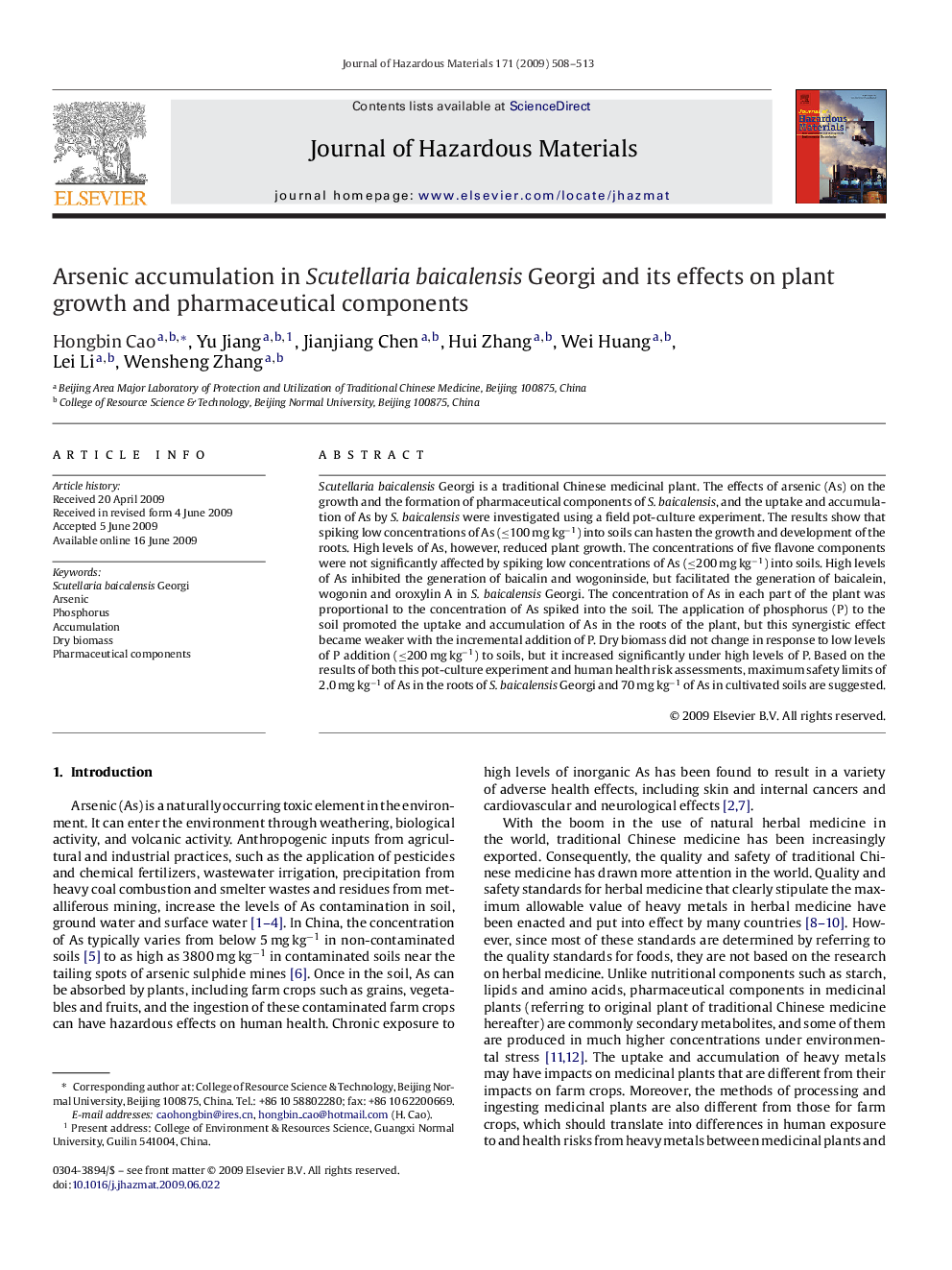| Article ID | Journal | Published Year | Pages | File Type |
|---|---|---|---|---|
| 581165 | Journal of Hazardous Materials | 2009 | 6 Pages |
Abstract
Scutellaria baicalensis Georgi is a traditional Chinese medicinal plant. The effects of arsenic (As) on the growth and the formation of pharmaceutical components of S. baicalensis, and the uptake and accumulation of As by S. baicalensis were investigated using a field pot-culture experiment. The results show that spiking low concentrations of As (â¤100 mg kgâ1) into soils can hasten the growth and development of the roots. High levels of As, however, reduced plant growth. The concentrations of five flavone components were not significantly affected by spiking low concentrations of As (â¤200 mg kgâ1) into soils. High levels of As inhibited the generation of baicalin and wogoninside, but facilitated the generation of baicalein, wogonin and oroxylin A in S. baicalensis Georgi. The concentration of As in each part of the plant was proportional to the concentration of As spiked into the soil. The application of phosphorus (P) to the soil promoted the uptake and accumulation of As in the roots of the plant, but this synergistic effect became weaker with the incremental addition of P. Dry biomass did not change in response to low levels of P addition (â¤200 mg kgâ1) to soils, but it increased significantly under high levels of P. Based on the results of both this pot-culture experiment and human health risk assessments, maximum safety limits of 2.0 mg kgâ1 of As in the roots of S. baicalensis Georgi and 70 mg kgâ1 of As in cultivated soils are suggested.
Related Topics
Physical Sciences and Engineering
Chemical Engineering
Chemical Health and Safety
Authors
Hongbin Cao, Yu Jiang, Jianjiang Chen, Hui Zhang, Wei Huang, Lei Li, Wensheng Zhang,
